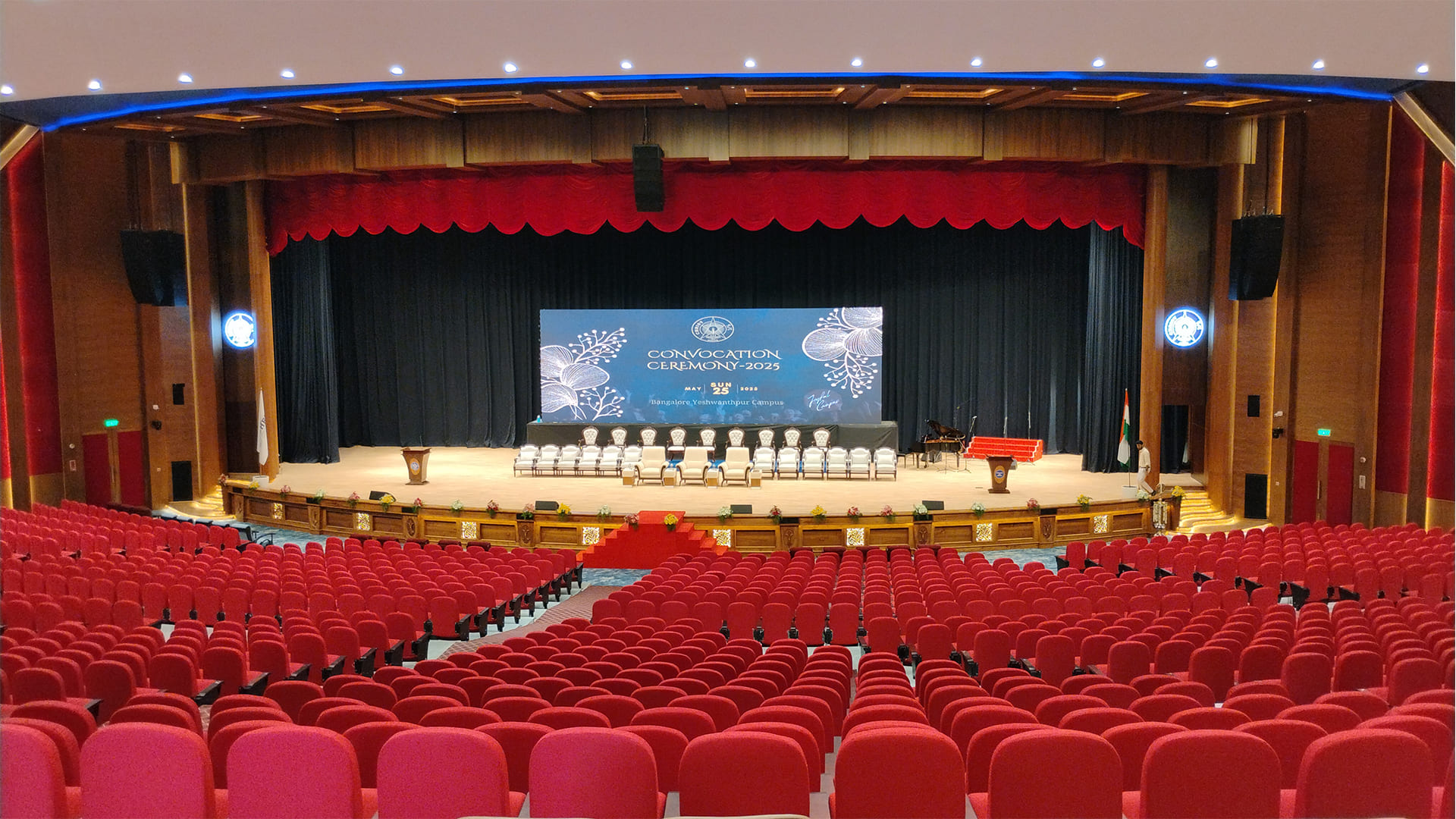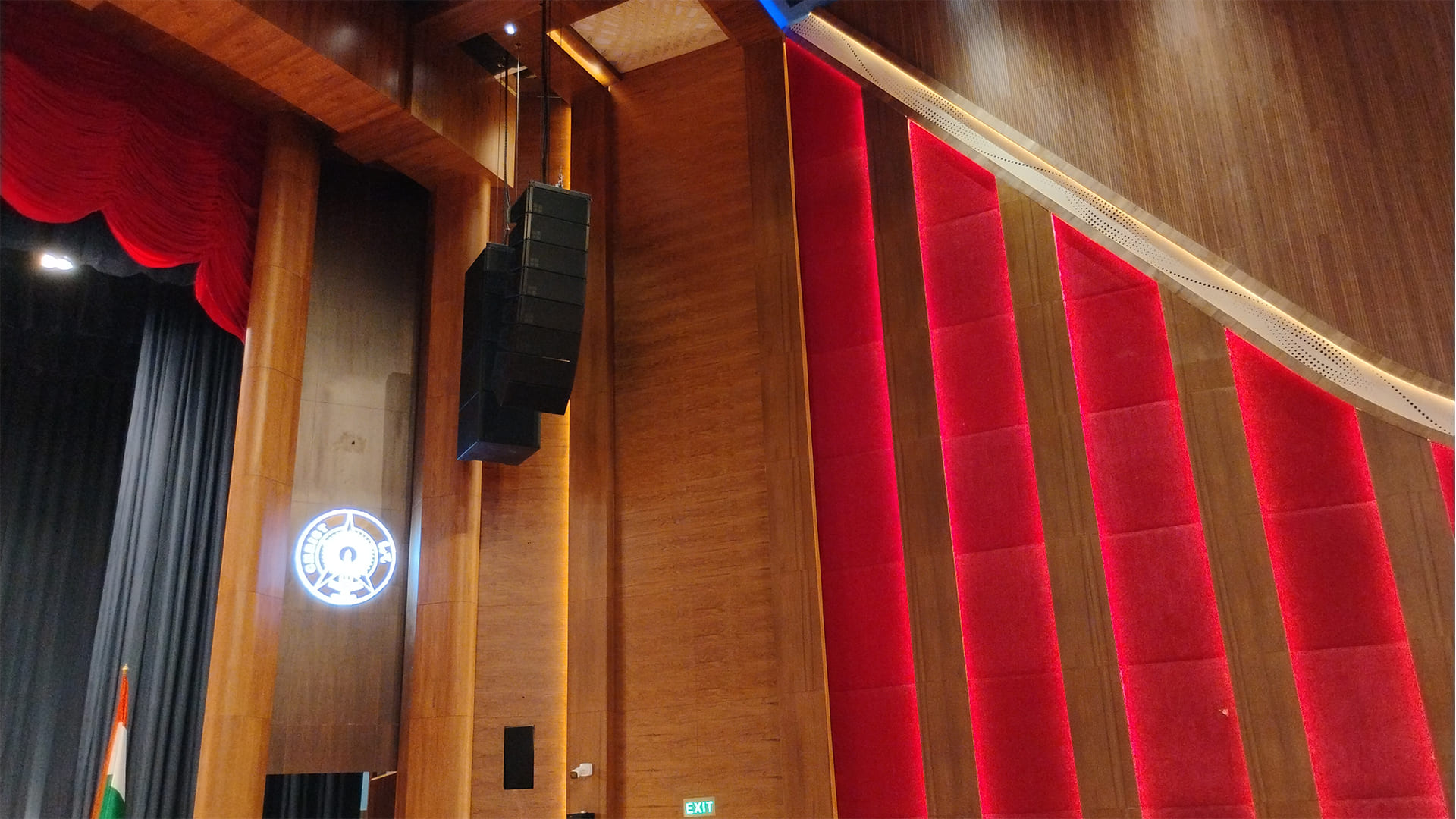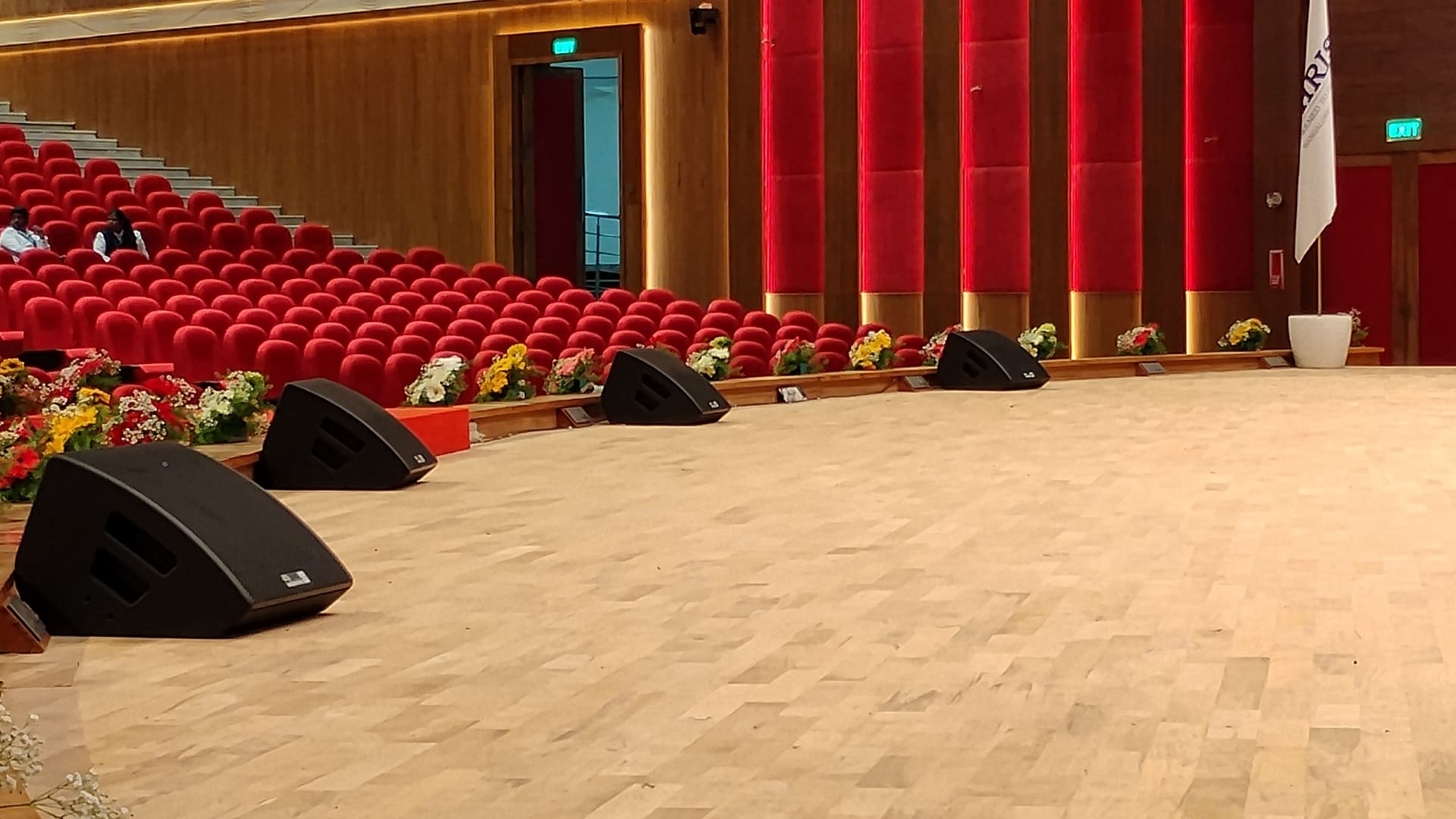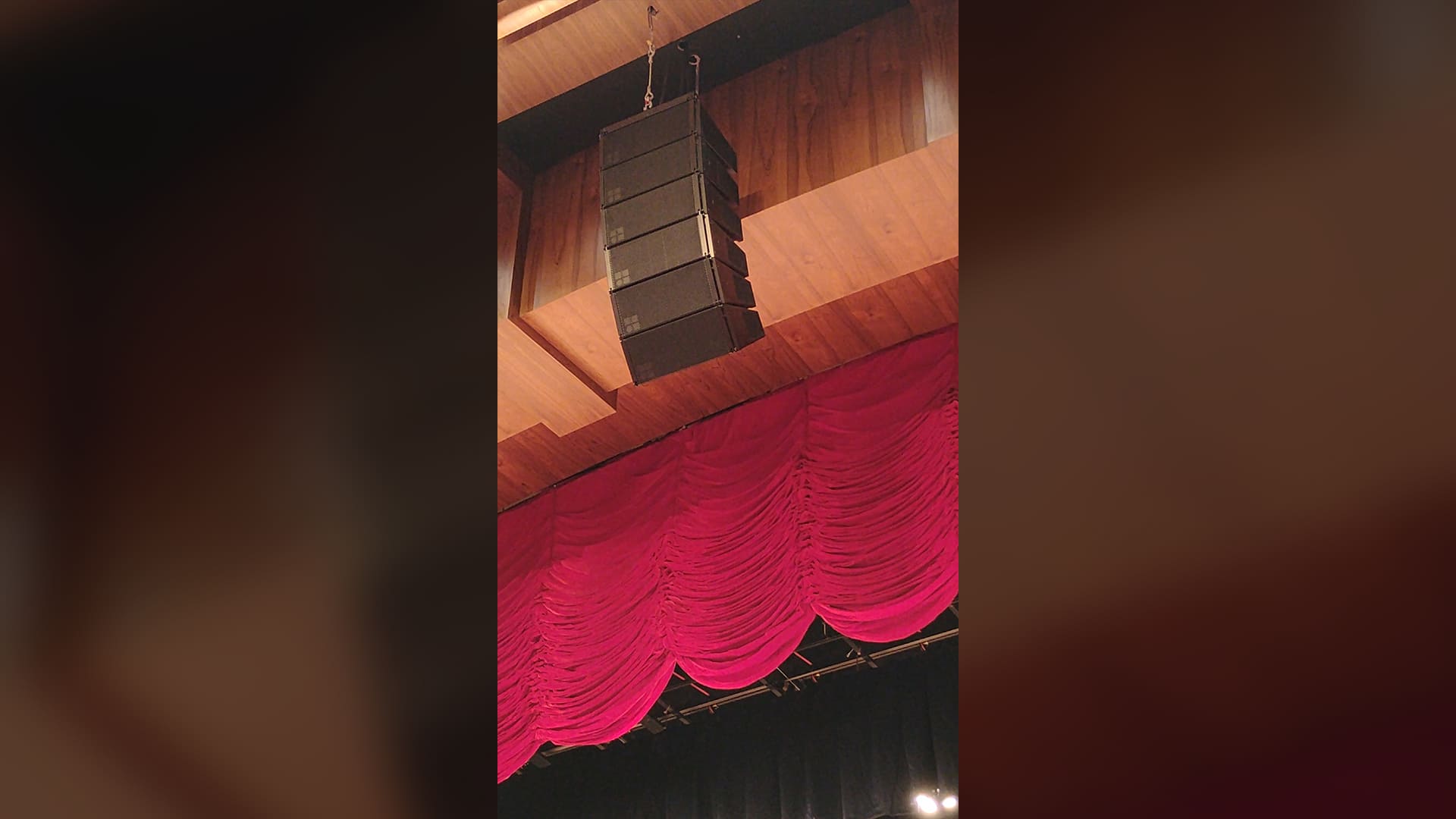AV takes center stage at Christ University’s spectacular new auditorium
Christ University opens doors to its new 500-pax multi-purpose auditorium in Yeshwanthpur, Bangalore. We spoke to Felix Remedios about designing an integrated sound, lighting, and visual experience that serves the University’s diverse requirements. Nishita H. Kalita reports.
Established as ‘Christ College’ in 1969, Christ (Deemed to be University) is a recognized educational institution renowned for its holistic approach to education. Staying true to their motto, ‘Excellence and Service,’ the institution has been growing steadily, focusing on providing well-equipped infrastructure for students’ academic and cultural activities while offering a diverse range of academic courses and programs.
When inaugurating their sprawling new Yeshwanthpur, Bangalore campus in 2022, the University turned to Reynolds’ Sound & Lighting Services to design AV systems for their 500-seater auditorium on the second floor of the main building.
A trusted partner from the start
“This was a brand new campus built from the ground up,” explains Felix Remedios, Managing Director & Founder, Reynold’s Sound & Lighting Services, adding that AV systems were installed in two lecture halls in the first phase, after which work started on the auditorium. Taking about a year and a half to complete, the project started in 2022 and culminated in early 2024 when the team successfully handed over the auditorium to the college.
From the outset, collaboration between Reynold’s Sound & Lighting Services and the architect was crucial. “Since this was a new campus, we worked closely with the architect from day one, considering various site angles and operational details. We also coordinated with multiple specialized teams responsible for air conditioning, decor, curtains, and lighting. “So, it was a highly coordinated effort, and everything went smoothly,” Felix recounts.
The entire AV system was strategically assembled as the project construction progressed. “We installed the lighting fixtures and managed all the cabling early on. Only the final fixtures were installed in the last month, along with accommodating installations of the seats, curtains, and adjustments to the AC ducting. Finally, the project turned out to be a great success.”
Discussing the opportunity to work on this project, Felix reflects on his long-standing relationship with Christ University over the years, having first worked with them as a rental supplier for AV systems at their main Koramangala campus. “Although we had never worked with them on a project installation before, they were well aware of our capabilities. We had shown them our work on past projects, and they were impressed,” he explains. Thus, when the University started this new campus from scratch, Felix and his team were there right from the beginning when the foundation was laid.
An integrated sound, light, and visual experience
What were the client’s expectations at the start of the project? Felix highlights that the quality of sound and the ability to adapt to different requirements, for any occasion, were important. “The client wanted a good sound system that delivers exceptional sound for various events, whether it’s a simple presentation, a debate, a theatrical performance, or a live band playing,” Felix explains. Simplicity of use was another factor at play. “We ensured that whatever we installed would be easy to use, allowing for a plug-and-play experience,” he emphasizes. Equally important was the integration of lighting and video. Felix elaborates on why it was important for the lighting and video to complement the overall experience. “We used a range of moving lights, creating a stage that looks really good, like a professional event. When the lighting and video are managed well, we can pull off even professional-level events. I think the client got much more than what they expected.”
Superior audio at every seat
The auditorium, designed with a stadium-style seating arrangement, is outfitted with a d&b audiotechnik sound system. It has twelve d&b Ti10L line array loudspeakers, ensuring clear and powerful sound distribution throughout the space, and four front-fill d&b 44S flush mount loudspeakers placed strategically to enrich the audio experience for the audience.
Felix elaborates on the setup: “The front-fill d&b 44S speakers are flush mounted, with two on each side integrated into the lip of the T series speakers. These are suspended from the left and right ends of the proscenium, forming a nice semicircle that optimizes sound delivery to the audience. The system also includes four d&b Vi-GSUB subwoofers, two on each side of the auditorium, all powered by a d&b 40D amplifier.”
Discussing the selection of the speakers, Felix says, “In addition to price management, the client was clear they didn’t want to cut any corners. We were familiar with d&b through our rental applications, and felt that, given the specifications and size of the auditorium, d&b was the best choice for this project.”
Elaborating on the microphones, Felix says, “All the microphones are from Shure, including the wireless receivers, handheld microphones, wireless beltpacks, lapel microphones, headset microphones, the antenna, and the antenna distribution system. This was a preference that came from the client, and since they were already using Shure, it was an easy choice for us,” he explains, adding that the system uses an Allen & Heath Avantis mixer platform.
“One of the really good things personally for me is that anywhere you walk in the auditorium, thanks to the d&b’s ArrayCalc simulation software, you get exactly the same level of audio output throughout,” says Felix. “In a live environment, like a two or three hour concert, it’s not easy to gauge this because there are people everywhere, and you can’t move around, but in a project like this, you have the time to move around the auditorium, sit in different seats, and hear the audio from different positions. So, it was amazing that it sounded so accurately the same in every corner.”
Lighting up the stage
Felix then discusses the auditorium lighting setup: “We installed a complete lighting solution from Stagetronics, a brand we’ve used often in many of our projects earlier. The lights are all LED-based, so the running cost is low because they don’t need to be changed often. The Front of House (FOH) lighting bar was placed about 20 to 25 feet in front of the proscenium, while the other three lighting bars were positioned inside the stage area. For controls, we have an NX2 lighting controller from Obsidian Control Systems.”
The auditorium houses a Christie D23WU-HS 23,650 lumen projector with eight Stagetronix cyclorama light fixtures for the backdrop. “This setup works well because we have used Christie’s short-throw projector lens. We wanted to avoid a projector hanging from or near the audience area, so we mounted the short-throw projector as close as possible, within the proscenium and inside the first frill curtain. With this positioning, we got optimum brightness while ensuring that the lens matched the screen size on the main stage,” he adds.
A multi-purpose auditorium space
Felix reflects on some of the challenges in the completion phase of the project. “As we worked towards getting everything ready by a certain date, there were a few hiccups: for example, the AC duct was coming into the stage area, making it feel smaller, but this is a common issue, and the AC technicians resolved it quickly.”
Today, the Yeshwantpur Christ University auditorium is used multiple times a day, and their in-house team completely manages everything. “It’s a plug-and-play system, and they manage it on their own because it’s so easy to set up; you just switch on and everything works,” says Felix. “Different streams at the University can book and use the auditorium, so it has become multi-purpose; they use it for Q&A, drama, performances, cultural programs, debates, and presentations.” Sharing his perspective on the dynamics of student-led events at colleges and campuses, he adds, “Unlike in professional settings, it’s different here because students are usually involved in running the events in the auditorium, and the in-house electrician is in charge of the equipment.”
Speaking about the client’s experience, Felix shares that “in the last year, we have hardly received a single call for support. The results speak for themselves, and I’m happy that the fathers are pleased with the overall AV experience.”
Turning learning into an immersive experience
In conclusion, Felix, who has extensive experience in AV within higher education and other sectors, shares his insights on the increasing use of AV in large-scale educational venues. “During the pandemic, one had no choice but to adapt to remote learning and meetings, as in-person gatherings were just not possible. It took some time, but a lot of training and teaching started taking place online.” He highlights how this shift also marked the rise of applications like Zoom, now a household name, and major companies like Google and Microsoft have developed similar applications. “Remote learning has become the de facto, and technology has made it easy for everybody to access remote learning through streaming devices.”
Continuing to highlight this shift, Felix notes that people now understand that technology is here to stay. “After the pandemic, we see a demand for higher-quality experiences, whether it’s lectures, performances, or other events,” he explains. With internet access on their fingertips, people have now become more aware of what’s happening around the world, and are expecting that same level of quality in their experiences.” Felix points to the Indian concert market as an example of this trend. The market has boomed over the past two years because people seek immersive experiences and want to be present at a venue rather than watching remotely from home.
The demand for a certain level of technology has also skyrocketed, notes Felix. Today’s audiences expect much more than before, creating a ripple effect across the industry. “Before, organizing a concert with AV on a rental basis would cost as low as 10 lakhs, but now the same concert can cost two to three times that amount because people want and expect much more today. This is also what the colleges are trying to offer: better auditoriums, lighting, and audio because students are very aware; they know and want that level of experience, and this is the direction in which the industry is heading.”







